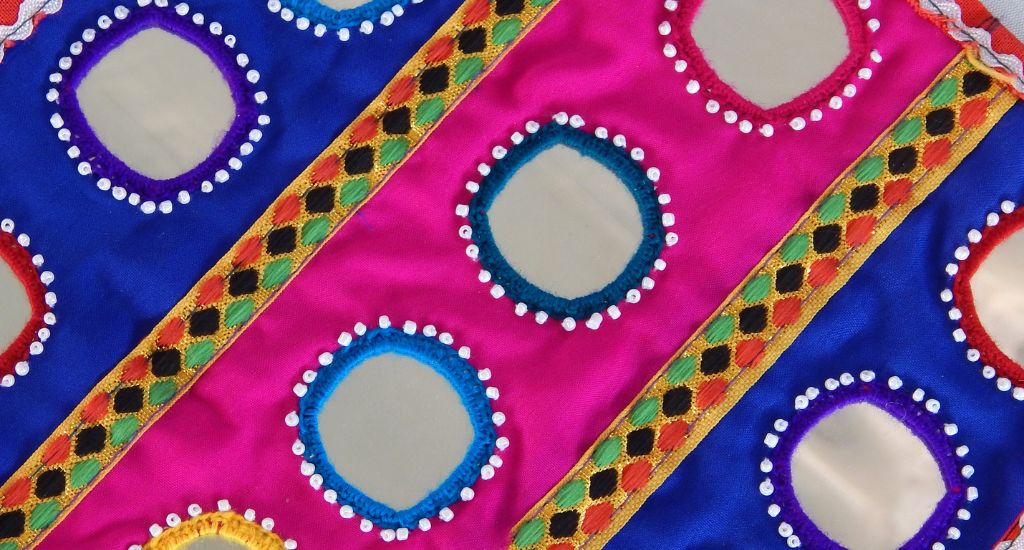
Go gypsy this summer with colourful Lambani decor
Sandur, a small town in Ballari district of Karnataka is on the world map for the beautiful embroidered products created by the Lambani women.

Sandur, a small town in Ballari district of Karnataka is on the world map for the beautiful embroidered products created by the Lambani women.
Chandabai is dressed in a saree that took her a whole year to make for herself. She proudly announces that it costs about Rs 20,000 in the market.
Chandabai belongs to the Lambani nomadic tribe, which is known for the bright, vibrant clothes donned by its women.
“I have been making Lambani clothing since childhood. I have raised and married off all my six children with the earnings from my Lambani embroidery work,” she said.
The Lambani community, also called the Banjara or Lambada tribe, are spread over several parts of the country, including Karnataka, Andhra Pradesh and Telangana. Despite having travelled across land and time, they have managed to retain the splendour of their craft.
The Lambani embroidery has reached all over the world with the export of bedsheets and cushion covers in a subtle palette, but the heavily embroidered bags in flamboyant colours remain a favourite among tourists.
Around 30 different types of stitches and 10 types of motif designs are used in Lambani embroidery.
Lambani women group together and work on their traditional art form to make a variety of products. Thirteen colours are mostly used in Lambani embroidery, out of which red and blue are the most common.
The base cloth used is either khadi or power loom fabric which is dyed locally, thus working in harmony with the local small scale industry. Both chemical and organic dyes are used to colour the cloth.

The famous ‘gypsy’ touch is then brought using pieces of mirror, coins, shells and costume jewellery, which are attached to the cloth using intricate stitches.
According to an interesting belief, Lambanis traditionally wore dresses embellished with mirrors to scare away wild animals in the forests.
The needlework combines pattern darning, embroidery, applique, patch and mirror work on a handloom fabric base. Products continue to be dramatically embellished with shells, trims, mirrors, cotton and wooden tassels weighted with lead and glass beads.
Colorful patches of cloth are joined with different types of stitches to make bags, wallets, sarees and home linen and decor accessories.
It is believed that the Lambanis first arrived in the Deccan in the 14th century. The influx got bigger later when they came transporting possessions for Aurangzeb’s army. They stayed on, becoming suppliers of grain and cattle to the British. With the advent of modern transportation, their nomadic life gave way to one rooted in agriculture, manual labour and craft.
It was perhaps because of their itinerant lifestyle and limited possessions, that the Lambani women became experts in creating marvels out of scraps. Using thread pulled from old saris, they sewed small pieces of cloth together to create beautiful clothing, accessories and household items.
Traditionally, these painstakingly created items were an essential part of the bridal trousseau. In the past, work on the trousseau began as soon as a girl was born.
In 1984, a local NGO Sandur Kushala Kala Kendra (SKKK) had a humble beginning when it brought together 12 Lambani women from the Thanda of Susheelanagar to work as a group.
This modest initiative heralded the start of a significant change in the lives of not only the Lambanis, but also other traditional craftspeople who lived in the region.

Today, about 500 artisans work with SKKK. It has helped 20 self-help groups to become active. Their creations are now available worldwide through e-commerce platforms.
“We are blown away by the art. Each piece is different from the other. It’s been a really special experience,” an American tourist said.
“Many foreigners come here and get fascinated by the range of our products,” Chandabai said. “They also buy in bulk.”
One look at the lively creations, and you know why.
The lead image shows Lambani embroidery work on clothes stitching pieces of mirror, decorative beads and coins on clothes by Indian tribal banjara or lambani people (Photo by Reddees, Shutterstock)